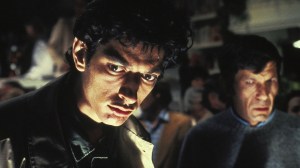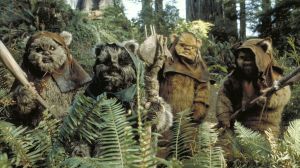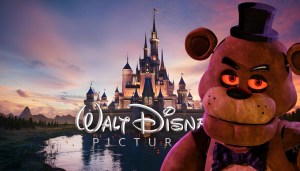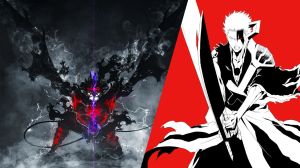In the earliest days of cinema, the industry looked to iconic creatures when it came to stories to bring to life, with figures like Dracula and Frankenstein’s Monster becoming icons almost instantly. Universal continued to expand its roster of horrifying characters with the Wolf Man and the Mummy, with this notorious roster of villains igniting multiple sequels in the coming decades. Despite the growing popularity of horror movies, it arguably wasn’t until the ’80s that the genre saw its biggest resurgence, with the decade giving life to characters that are just as popular now as they were back then, including some of those antagonists continuing to earn unsettling stories.
Videos by ComicBook.com
The ’50s and ’60s leaned more heavily on real-world fears, tapping into a variety of science fiction themes than monsters that audiences had grown familiar with. In the ’70s, early examples of the slasher film began to take shape, somehow making audiences become enamored with murderous killers. The ’80s were crowded with a variety of different horror icons, as studios discovered audiences were far more interested in seeing a killer return for film after film than seeing a “hero” regularly survive multiple brushes with death.
While slashers peaked in the decade and flooded the market, the ’90s saw a steep decline in not just the amount of horror icons, but also in the success of the previous decade’s notable killers. Fans have patiently waited to see which of these beloved icons could grace the screen again, but franchises based on The Conjuring, Insidious, and Saw have replaced the icons of the ’80s.
Check out how the most familiar faces in horror from the ’80s stack up against one another!
6) Michael Myers
The original Halloween premiered in 1978, but the masked killer took center stage in three sequels in the ’80s, making it his most popular decade. Additionally, it was his films in the ’80s that filled in his backstory and explained the motivations behind his murders.
Sadly, it was Michael’s motivations that completely destroyed the allure of the character, as the original film and it’s vague explanations allowed audiences to fill in their own justifications, striking fear into the hearts of anyone who ever got an uncomfortable feeling from someone around town.
The ’80s may have been big for Michael, but none of his films released that decade compared to the quality of the original, forcing a pioneer in the slasher world to take a backseat to other up and coming killers.
5) Leatherface
Similar to Michael Myers, Leatherface debuted in the ’70s with The Texas Chain Saw Massacre, but didn’t officially solidify his status as a recurring killer until 1986’s The Texas Chainsaw Massacre 2.
In his own right, there isn’t much to the killer’s personality, as he typically just acts out whatever orders administered by his disturbed family. For all intents and purposes, Leatherface isn’t much more deadly or interesting than Michael Myers, but the Texan does have a few advantages.
While both killers wear masks, Leatherface has constructed his out of the skin of his victims as opposed to having stolen it from a hardware store. While Myers may be scary due to his sneaking silence, Leatherface makes his presence well-known, due in large part to the horrifying sound of his weapon of choice. In fact, it might be the deafening whir of the chain or the guttural, primal sounds he makes that creates such a formidable and frightening foe.
4) Pinhead

Far more than just a bloodthirsty murderer, Pinhead’s earns far less screen time in the Hellraiser franchise than the other villains in their respective films. In fact, we’d argue that it was the Cenobite’s omniscient presence throughout the series that makes him so terrifying, as audiences never knew what a film’s character could do to create an encounter with the demonic entity.
Pinhead also marks the only villain who could be consciously summoned to confront a future victim, whereas all the other killers’ victims spend much of their time running away from the murderers.
The joy of the Hellraiser franchise is their unpredictability, compared to many of the other franchises being nothing more than elaborate games of cat-and-mouse. The films could take place in the past, the future or even in outer space, but none of the characters could ever escape Pinhead.
3) Jason Voorhees
Jason might not have been the killer of the first Friday the 13th and he might not have gotten his iconic hockey mask until the third film, but with eight entries into his franchise debuting throughout the decade, the killer helped define the genre.
In hopes of capitalizing on Halloween‘s success and its formula of creating a title that sounded ominous and merely filling in the narrative after securing funding, the Friday the 13th series is one of the most formulaic slasher series out there, for better or worse. With Jason dying as a little boy because camp counselors were too busy fornicating, Jason aimed to prevent that mistake ever being repeated by killing coeds who recklessly imbibed in drugs, alcohol or sex.
Ironically, the series reached a high point with the fourth film, which included “The Final Chapter” in its title, only to revive interest in the property and result in seven sequels and a reboot.
Jason might not be the most creative character, merely using primal methods to vanquish countless victims, but his visage is still one of the most memorable in the world of horror.
2) Chucky
Much of the decade was filled by strong, silent types, with 1988’s Child’s Play birthing an all-new kind of villain that was very much the opposite. What Chucky lacked in stature he made up for with terrible puns and a sadistic sense of humor, immediately making him a memorable killer of the ’80s, even if he didn’t get a sequel until 1990.
After the soul of a murderer gets trapped inside a seemingly harmless doll, all hell breaks loose as that doll kills those who mock the toy’s physical shortcomings.
Not only could Chucky cause copious amounts of bodily harm, but his wit was razor sharp, immediately adding insult to injury. The doll is so charming that last year saw the release of the seventh film in the series, Cult of Chucky, which each installment being written by Don Mancini, a feat most other franchises never achieved.
1) Freddy Krueger

Debuting in 1984, Freddy Krueger appeared in five films in the ’80s, in addition to inspiring his own TV show, Freddy’s Nightmares, in 1988.
Similar to other icons of the decade, Freddy showed potential in his original film, A Nightmare on Elm Street, with each subsequent film utilizing the character to his full potential. Much like the Hellraiser series, Freddy wasn’t necessarily hindered to one location or setting, as his realm was the dreams of residents in the town that killed him.
Krueger combined the best of many of the other icons, as he was humorous like Chucky, ambitious in his methods of execution like Pinhead and unstoppable like Jason Voorhees, all rolled into one.
The character, of course, wouldn’t be nearly as memorable without the captivating performance from Robert Englund, as evidenced by the lackluster reception of the only installment in which Freddy was played by a different actor (Jackie Earle Haley) in the 2010 remake.
From his savage violence to his sarcastic wit, Freddy Krueger hands-down dominated the world of horror in the ’80s.
Honorable Mention – Elvira
Far from being a villain, you can’t talk about horror icons in the ’80s without talking about Elvira.
Debuting in 1981, Elvira began as merely a host who introduced horror movies during a weekly program, with performer Cassandra Peterson being granted the freedom to develop the character as she saw fit. Peterson gave Elvira a Valley girl personality, along with a morbid sense of humor, which was paired with an incredibly tight, low-cut gown and beehive hairdo that shared a resemblance with ’50s horror host Vampira.
The show became so popular that Elvira became the reason people tuned in to the program, caring far less about the movies themselves. Elvira inspired a wide line of merchandise, pinball machines, comic books and even feature films.
The Mistress of the Dark might not be deadly, but the ’80s helped her establish a legacy that has yet to be topped by any other horror host.








